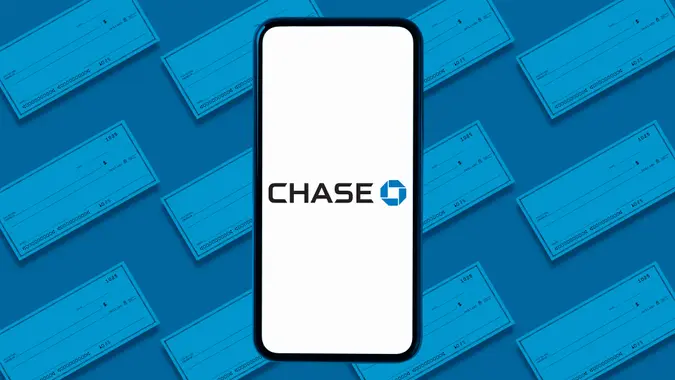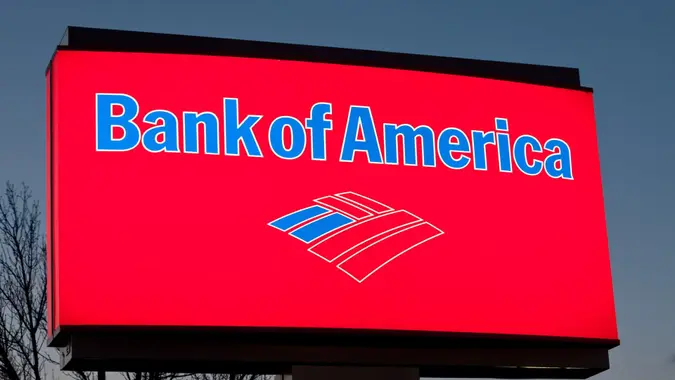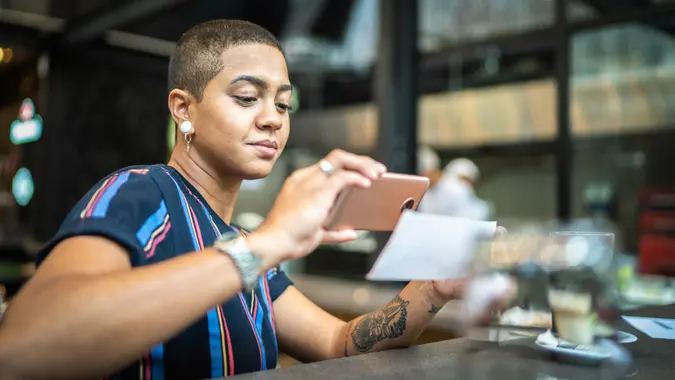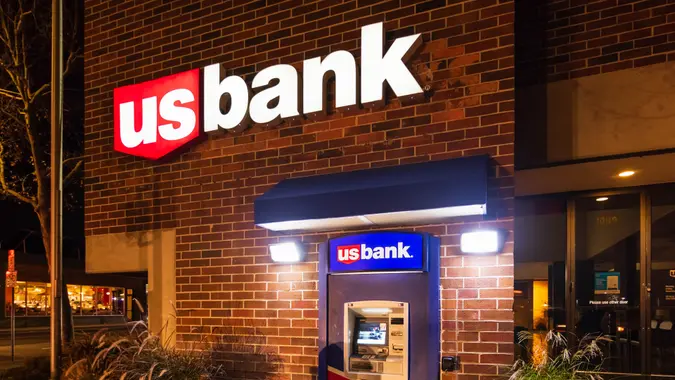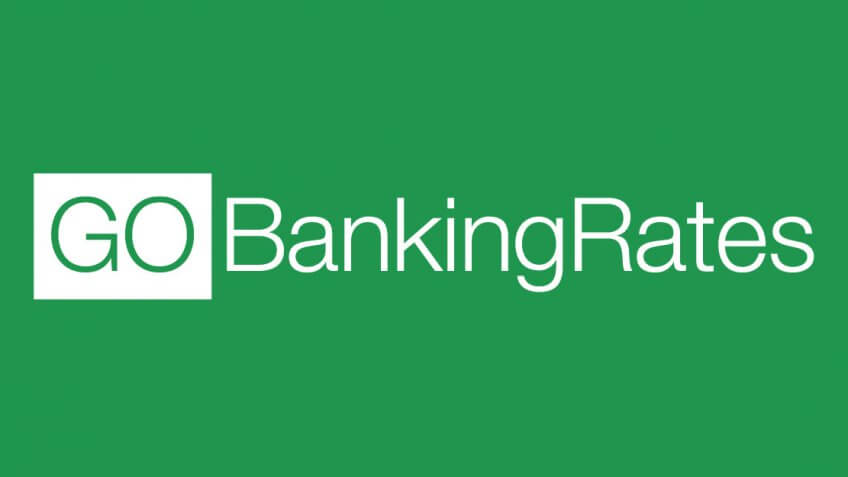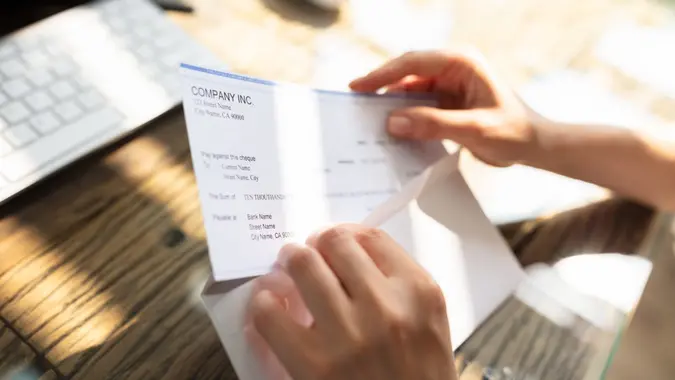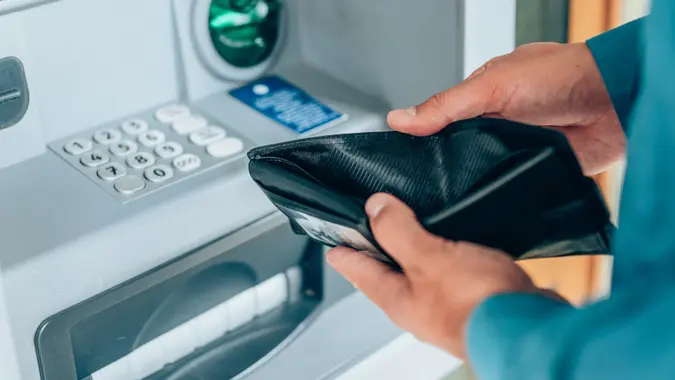Do You Have Too Much Money in Your Checking Account?

Commitment to Our Readers
GOBankingRates' editorial team is committed to bringing you unbiased reviews and information. We use data-driven methodologies to evaluate financial products and services - our reviews and ratings are not influenced by advertisers. You can read more about our editorial guidelines and our products and services review methodology.

20 Years
Helping You Live Richer

Reviewed
by Experts

Trusted by
Millions of Readers
Despite all the changes that have reshaped the financial industry over the years and decades, the standard checking account remains the backbone of personal banking.
Many other banking services will come and go, but your daily deposits, withdrawals and debit card transactions all come from your checking home base. Though any of your bank accounts are typically member-FDIC, and it’s safe to keep your money in your checking account, a whole lot of guesswork still goes into deciding how much cash to stash in the most liquid of all account types.
“When it comes to how much money to keep in the account, striking the right balance is often a puzzle,” said Jake Hill, CEO of DebtHammer. “An individual might have too little money in their checking account if they habitually find themselves overdrawn or using their credit cards because they’re short on cash. With too much, however, there can be fewer financial opportunities.”
While ultimately, finding the right balance is up to you, there are ways to figure out whether you have too much allocated to your checking account.
Quick Take: How Much You Should Have in Your Checking Account
When it comes to your checking account, most money management experts would suggest only keeping enough to cover about two months’ worth of living expenses stored there.
Here are some key reasons why you should only keep sufficient funds for your immediate expenses in your checking account:
- It acts as a buffer and ensures things you have on autopay will go through without you incurring overdraft fees.
- You may use your debit card for daily or weekly purchases at grocery stores, retailers or cash ATM withdrawals, so having enough to cover your budgeted weekly or monthly expenses keeps you from worrying about your balance.
- If you have roughly $4,000 a month in total expenses for mortgage payments, groceries, entertainment and more, a good rule to follow would be for you to keep about $8,000 in your checking account balance.
Here are some more tips and things to keep in mind when it comes to your checking account balance.
Building a Budget Makes It Less of a Guessing Game
Your checking account is the workhorse of your personal finance stable, but it’s a rudderless ship without a budget. All roads lead back to your checking account — your credit card bills, insurance premiums, rent or mortgage payments, Venmo, PayPal, streaming subscriptions, utilities and fantasy football dues.
If you don’t have that and all the rest accounted for with a simple budget and spending plan, you’ll never do better than throwing darts when deciding what to allocate to checking. Keep in mind that monthly service charges or fees may apply to some accounts, so be sure to factor those into your budget.
What You Plan To Spend vs. Emergency Savings
The experts agree that once you have at least a loose budget in place, you should put what you think you’ll spend that month in your checking account with a little extra padding for the inevitable surprises.
Where your checking should cover your regularly occurring expenses, an emergency fund should have a few months’ worth of expenses saved in case you incur unexpected financial shocks. Although having two months of expenses is advisable, the thickness of that padding is where opinions start to vary.
“The recommendation is that the checking account contains some buffer in the amount of 20% to 30% of your monthly expenses to prevent regular living overdraws,” said Jennifer White, the senior director of banking and payments intelligence at J.D. Power.
Christopher William, a certified public accountant (CPA), finance expert and the founder of Balanced News Summary, uses what he calls the 10-in-three rule, which allocates his money toward checking quarterly.
“I always make sure I have more than 10% of the funds I will need in the next three months,” said William. “In these uncertain economic times, you can never have too much saved, but I find 10% strikes a good balance between too much and not enough.”
He added, “Bills will fluctuate, so it is important to plan and budget conservatively.”
Too Much Money in Checking Is a Good Problem To Have
An overfunded checking account could be a sign of misallocated resources, but misplaced excess cash is a blessing compared to no excess cash at all.
Even so, whatever sits unused in checking earns nothing or close to it when it could be compounding in a decent high-yield savings or money market account. Of all the traditional banking products and services, checking accounts are least likely to earn any kind of interest rate.
Better yet, you could put your checking account’s excess fat to work in an ETF or some other vehicle with real growth potential. Just be sure you have enough in savings to cover any checking shortfalls for the foreseeable future.
“If your combined bank accounts already have enough to fund six to eight months of necessary living expenses, any additional dollars need to go toward helping you reach longer-term financial goals such as retirement or other investments,” said Kevin R. Chancellor, a financial advisor, certified Social Security claiming strategist and the CEO of Black Lab Financial Services.
“Historically, cash has not kept up with the rising rate of inflation, so every dollar past what is truly needed is potentially at risk for losing purchasing power in the future.”
Final Take To GO
The bottom line is that having only $100 in your checking is playing fast and loose with your finances. However, until fairly recently, running a lean checking account came with a real risk of real consequences. If you miscalculated, overdraft fees were a certainty, and they often caused ripple effects that triggered returned check fees, minimum balance fees, insufficient fund fees and more.
Today, though as with anything, terms and conditions may apply. The stakes are lower, but not nonexistent. When a loose business day is a metric for when you’ll receive funds or a transaction will clear, it is better to pad both your account and the odds that you’ll have enough to pay for all of your necessities.
Andrew Lisa contributed to the reporting for this article.
 Written by
Written by  Edited by
Edited by 




